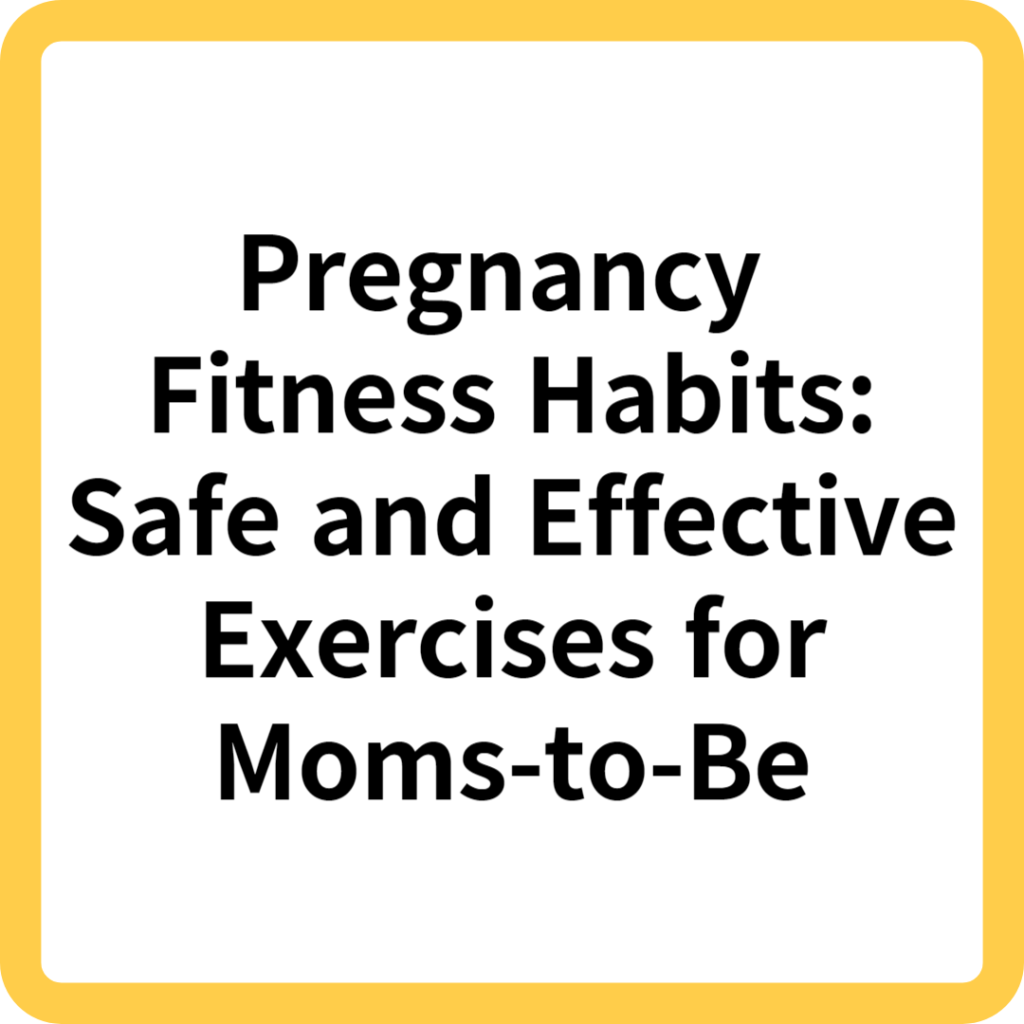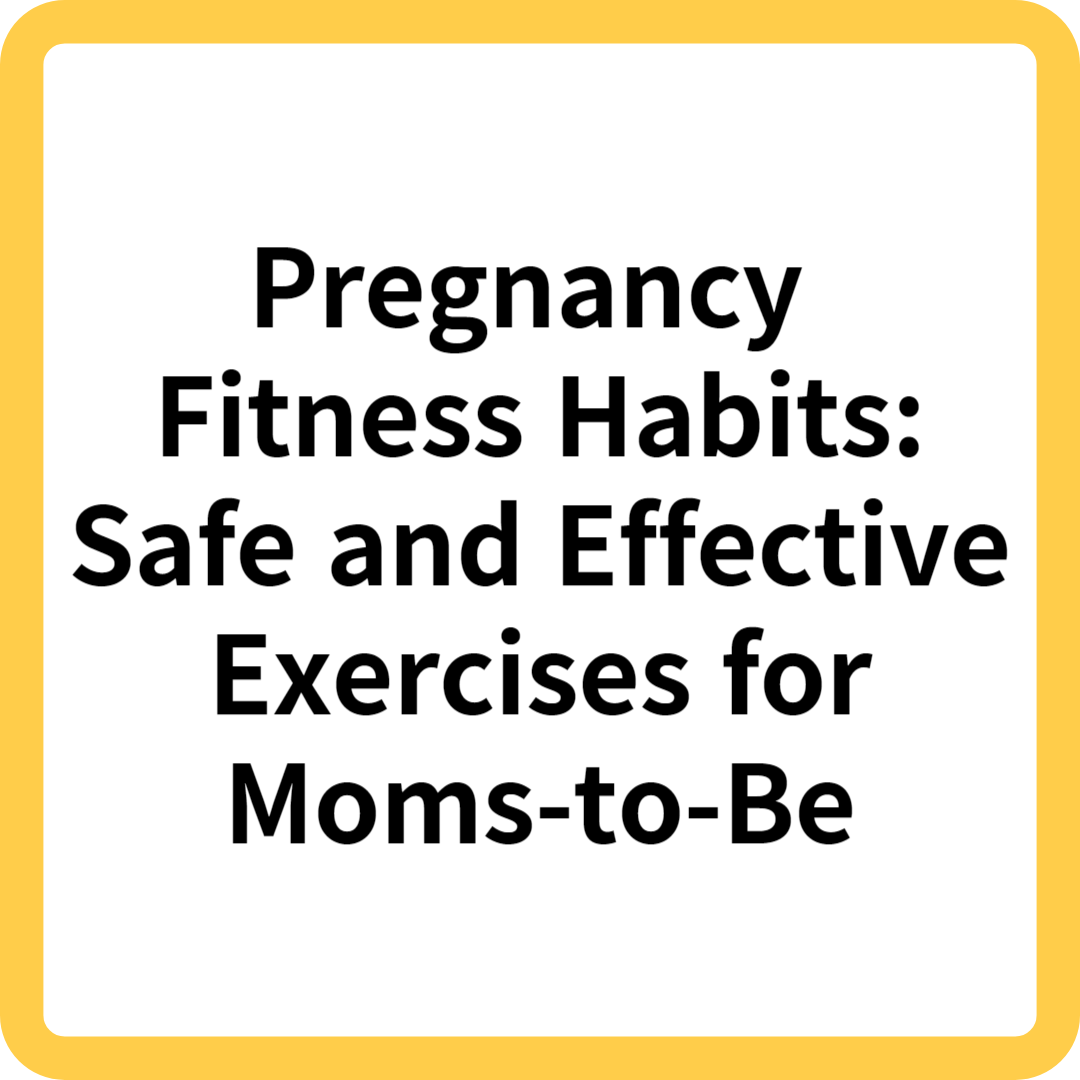Pregnancy is a transformative journey that brings about numerous physical and emotional changes. Staying active during this period can contribute to a healthier pregnancy, an easier labor, and a smoother postpartum recovery. In this guide, we delve into essential pregnancy fitness habits that offer a safe and effective approach to maintaining physical wellness while nurturing the growing life within.

Understanding the Importance of Pregnancy Fitness
Pregnancy fitness isn’t about achieving new personal bests; it’s about embracing habits that promote the well-being of both the expectant mother and the developing baby. Regular exercise during pregnancy can help alleviate common discomforts like back pain, improve mood, boost energy levels, and enhance sleep quality. Additionally, it prepares the body for the physical demands of childbirth.

Consultation and Customization
Before embarking on any fitness routine during pregnancy, consulting a healthcare provider is crucial. Every pregnancy is unique, and a medical professional can offer personalized guidance based on individual health conditions and considerations. They can recommend suitable exercises and precautions tailored to each trimester.
Safe and Effective Exercises
- Walking: A low-impact cardiovascular activity that’s easy to integrate into daily routines. It promotes circulation, supports heart health, and helps manage weight gain.
- Swimming: The buoyancy of water reduces strain on joints while providing a full-body workout. Swimming helps ease swelling, supports muscle tone, and relieves pressure on the spine.
- Prenatal Yoga: Gentle stretches, poses, and controlled breathing can enhance flexibility, balance, and relaxation. Yoga also fosters mindfulness, which can aid in managing stress and anxiety.
- Strength Training: Using light weights or resistance bands, focus on maintaining muscle tone. Strengthening the back, core, and pelvic floor muscles contributes to better posture and reduced discomfort.
- Pelvic Floor Exercises: Kegels strengthen the pelvic floor muscles, which play a crucial role in childbirth and postpartum recovery. Regular practice can aid in preventing urinary incontinence.

Safety Precautions
- Avoid Overexertion: Listen to your body and don’t push yourself too hard. Pregnancy is not the time to strive for high-intensity workouts or weight lifting records.
- Stay Hydrated: Drink water before, during, and after exercise to prevent dehydration.
- Proper Attire: Wear comfortable, breathable clothing and supportive shoes to minimize discomfort and injury risks.
- Body Awareness: Pay attention to changes in balance and coordination as your body changes. Modify exercises as needed to maintain stability.
- Temperature Regulation: Opt for cool environments and avoid overheating during exercise. This helps prevent potential risks to the baby.
Benefits Beyond Birth
Maintaining a fitness routine during pregnancy can have lasting benefits. It eases the transition to postpartum activities, helps restore pre-pregnancy weight, and enhances overall well-being. Remember, pregnancy fitness habits are about nurturing yourself and your baby, fostering a healthier journey through this incredible chapter of life.
Conclusion
In conclusion, embracing safe and effective pregnancy fitness habits can provide numerous advantages for both expectant mothers and their developing babies. By engaging in suitable exercises, consulting medical professionals, and prioritizing safety, pregnant individuals can foster physical wellness, emotional balance, and a smoother transition into postpartum life. Remember, each pregnancy is unique, so it’s essential to tailor fitness routines to individual needs and seek medical guidance for a healthy and fulfilling journey. By nurturing both body and baby through mindful exercise, you can create a foundation of well-being that extends far beyond the nine months of pregnancy.

